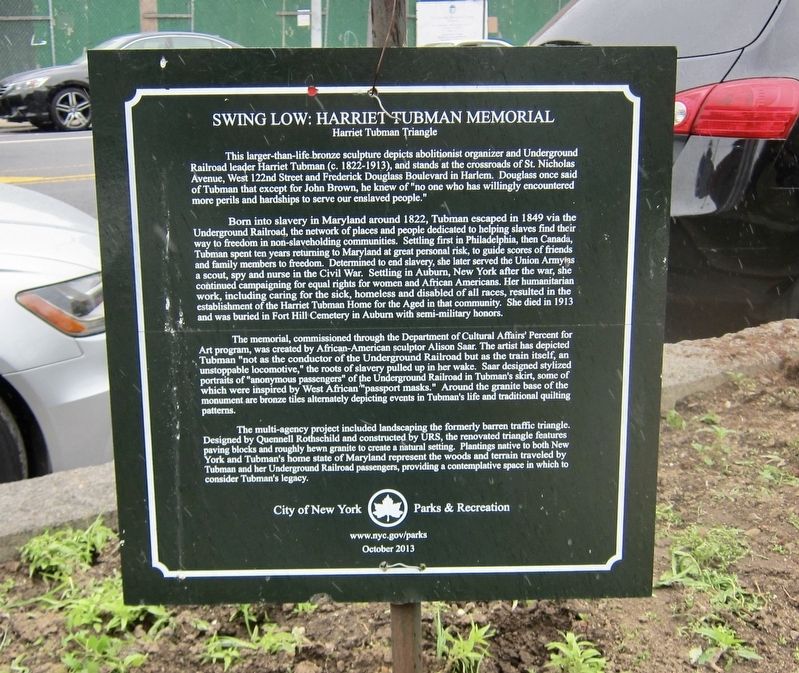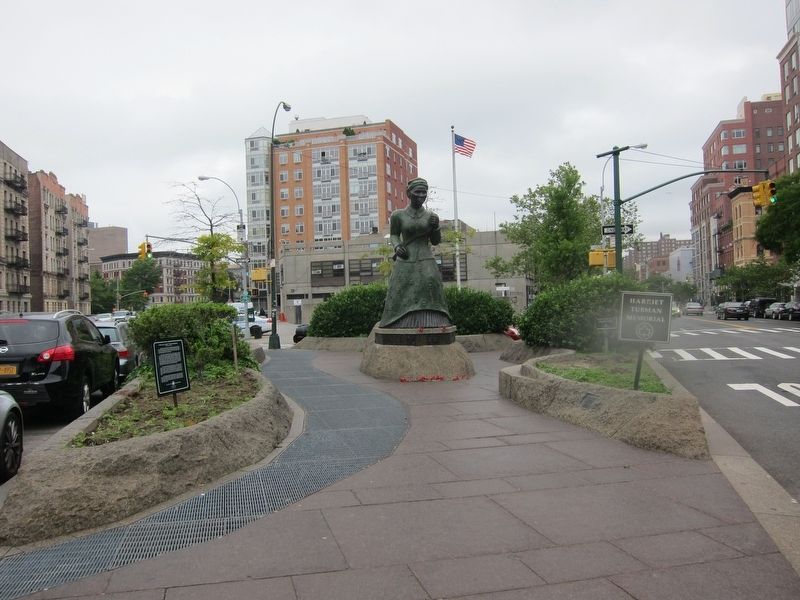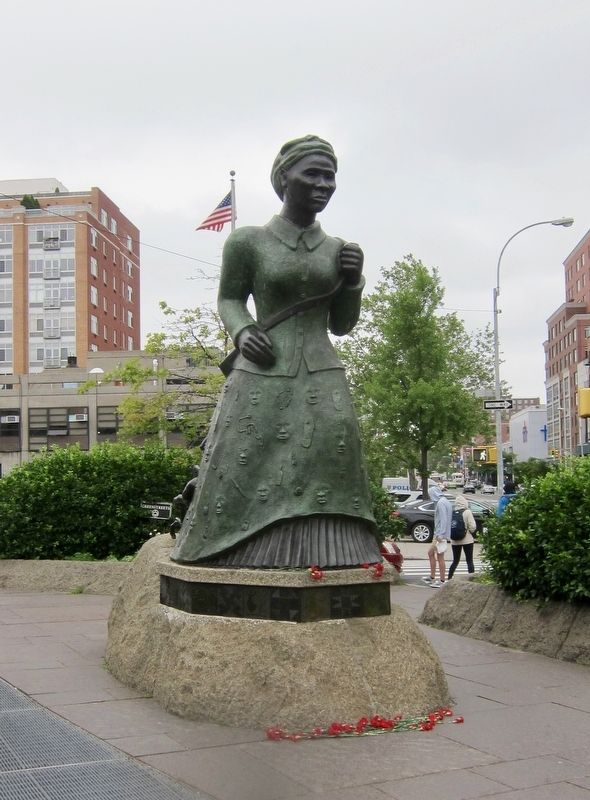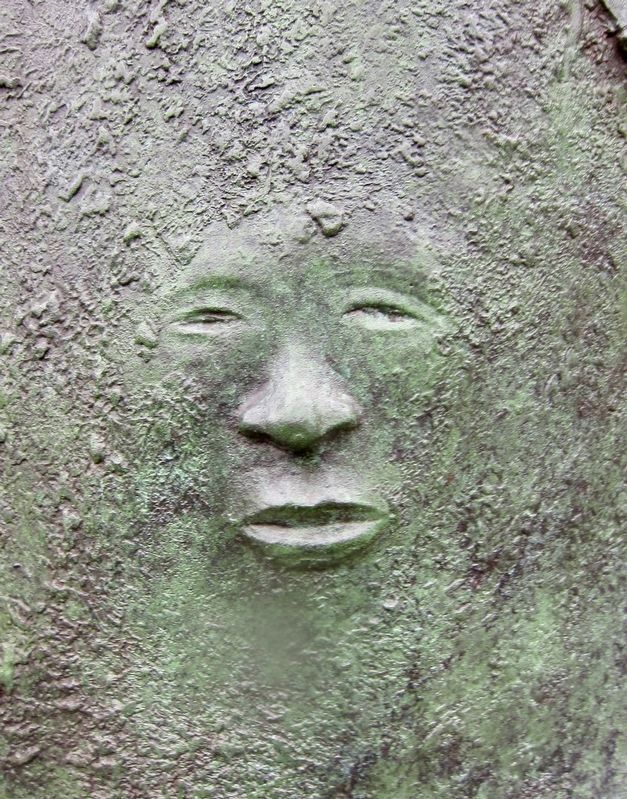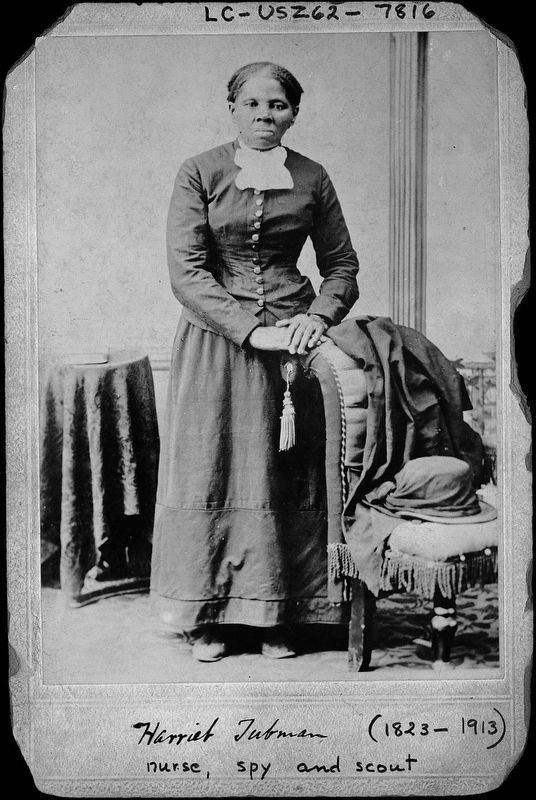Central Harlem in Manhattan in New York County, New York — The American Northeast (Mid-Atlantic)
Swing Low: Harriet Tubman Memorial
Harriet Tubman Triangle
Born into slavery in Maryland around 1822, Tubman escaped in 1849 via the Underground Railroad, the network of places and people dedicated to helping slaves find their way to freedom in non-slaveholding communities. Settling first in Philadelphia, then Canada, Tubman spent ten years returning to Maryland at great personal risk, to guide scores of friends and family members to freedom. Determined to end slavery, she later served the Union Army as a scout, spy and nurse in the Civil War. Settling in Auburn, New York after the war, she continued campaigning for equal rights for women and African-Americans. Her humanitarian work, including caring for the sick, homeless and disabled of all races, resulted in the establishment of the Harriet Tubman Home for the Aged in that community. She died in 1913 and was buried in Fort Hill Cemetery in Auburn with semi-military honors.
The memorial, commissioned through the Department of Cultural Affairs' Percent for Art program, was created by African-American sculptor Alison Saar. The artist has depicted Tubman "not as the conductor of the Underground Railroad but as the train itself, an unstoppable locomotive,”¯ the roots of slavery pulled up in her wake. Saar designed stylized portraits of "anonymous passengers" of the Underground Railroad in Tubman's skirt, some of which were inspired by West African "passport masks." Around the granite base of the monument are bronze tiles alternately depicting events in Tubman's life and traditional quilting patterns.
The $2.8 million, multi-agency project, which included the landscaping of a formerly barren traffic triangle, was sponsored by former Manhattan Borough President C. Virginia Fields. Designed by Quennell Rothschild and constructed by URS, the renovated triangle features paving blocks and roughly hewn granite to create a natural setting. Plantings native to both New York and Tubman's home state of Maryland represent the woods and terrain traveled by Tubman and her Underground Railroad passengers, providing a contemplative space in which to consider Tubman's legacy.
Erected 2013 by City of New York Parks & Recreation.
Topics and series. This historical marker and memorial is listed in these topic lists: Abolition & Underground RR
• African Americans • Civil Rights • Women. In addition, it is included in the NYC Parks series list.
Location. 40° 48.489′ N, 73° 57.17′ W. Marker is in Manhattan, New York, in New York County. It is in Central Harlem. Marker is at the intersection of Frederick Douglass Boulevard and West 122nd Street on Frederick Douglass Boulevard. Touch for map. Marker is in this post office area: New York NY 10027, United States of America. Touch for directions.
Other nearby markers. At least 8 other markers are within walking distance of this marker. Morningside Park (approx. 0.2 miles away); Roosevelt Triangle (approx. ¼ mile away); GreenThumb (approx. ¼ mile away); Adam Clayton Powell, Jr. (approx. ¼ mile away); A. Philip Randolph Square (approx. 0.3 miles away); Graham Court Apartments (approx. 0.3 miles away); Harlem Landmark Trail (approx. 0.3 miles away); Oscar J. Hijuelos (approx. 0.3 miles away). Touch for a list and map of all markers in Manhattan.
Also see . . .
1. The Life of Harriet Tubman (NYhistory.org). Harriet Tubman's life was a monument to courage and determination that continues to stand out in American history. Born into slavery in Maryland, Harriet Tubman freed herself, and played a major role in freeing the remaining millions. After the Civil War, she joined her family in Auburn, NY, where she founded the Harriet Tubman Home. (Submitted on July 10, 2017.)
2. It's My Park: Harriet Tubman Memorial (YouTube, NYC Parks, 4 min.). Meet Alison Saar, the artist who created "Swing Low: A Memorial to Harriet Tubman" at West 122nd Street, St. Nicholas Avenue and Frederick Douglass Boulevard. (Submitted on July 10, 2017.)
3. Swing Low -- The Harriet Tubman Statue, West 122nd St. "Daytonian in Manhattan" entry. (Submitted on April 12, 2020, by Larry Gertner of New York, New York.)
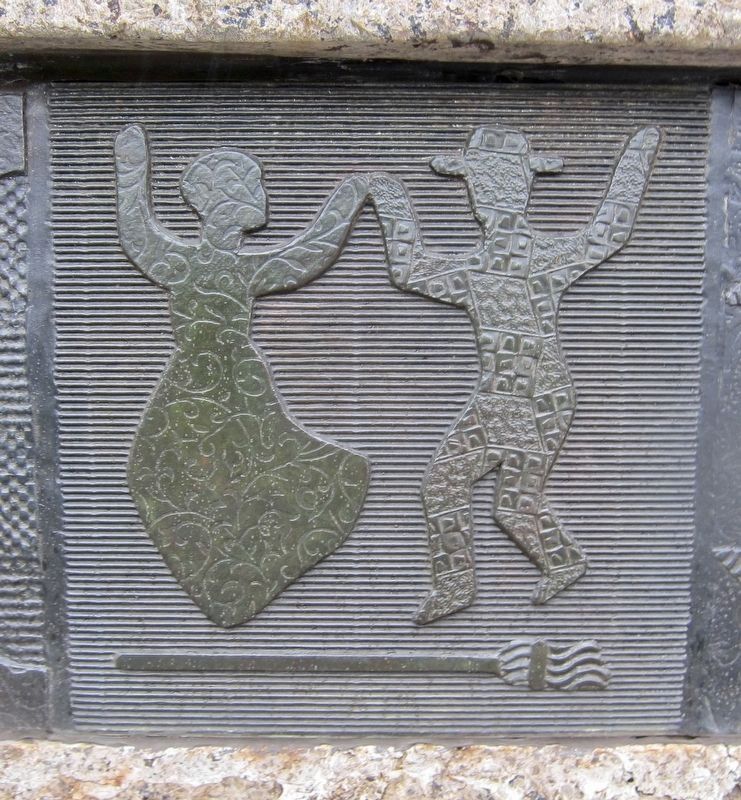
Photographed By Andrew Ruppenstein, May 30, 2017
5. Swing Low: Harriet Tubman Memorial - Decorative Quilt Detail: "Jumping the Broom"
...In some African-American communities, marrying couples will end their ceremony by jumping over a broomstick, either together or separately. This practice is well attested for as a marriage ceremony for slaves in the Southern United States in the 1840s and 1850s who were often not permitted to wed legally.... Wikipedia, "Jumping the Broom"
Credits. This page was last revised on July 25, 2023. It was originally submitted on July 9, 2017, by Andrew Ruppenstein of Lamorinda, California. This page has been viewed 490 times since then and 36 times this year. Photos: 1, 2. submitted on July 9, 2017, by Andrew Ruppenstein of Lamorinda, California. 3, 4, 5, 6. submitted on July 10, 2017, by Andrew Ruppenstein of Lamorinda, California.
